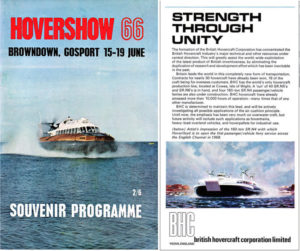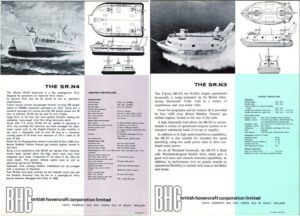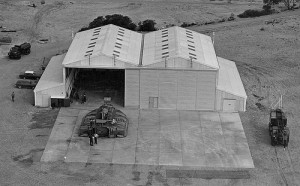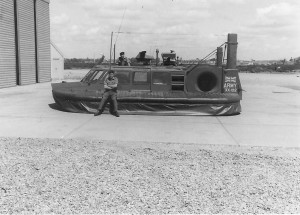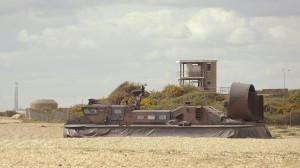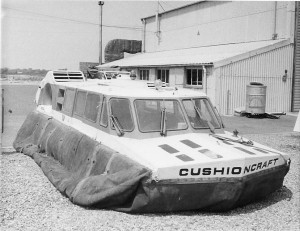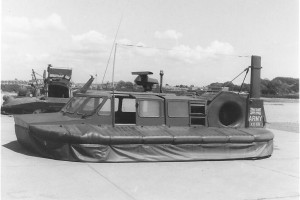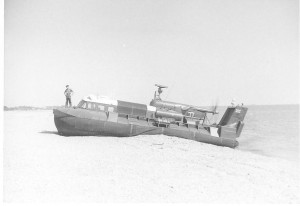The Development of the Hovercraft
Stokes Bay played a part in the development of the hovercraft. Its inventor, Sir Christopher Cockerel, worked on the first hovercraft from 1955 and, in 1959, his prototype SR-N1 made its maiden flight from HMS Daedalus. Hovercraft development continued at Stokes Bay.
Hovertravel
In 1965 Hovertravel applied to use a section of beach south of No.2 Battery to operate a cross Solent passenger service to Ryde for a temporary period not exceeding twelve months until a permanent site could be found. They only required this site to gain practical experience running a hovercraft service. The use of this site might require the re-siting of sixteen day huts and car parking was to be provided for 140 to 150 cars. A new 38-seat SRN6 was used as a demonstration and found to be much less noisy than expected!
Hovertravel went on to provide a passenger service from July with a slipway built to allow the hovercraft to land. A nearby cabin sold tickets and provided passenger waiting facilities. The service offered a very quick method to travel but also drew a lot of attention from residents because of the noise and letters of complaint were that, apart from the noise, the hovercraft caused smell, beach pollution and traffic problems. Later that year, new skirts were fitted and the approach course to the slip way changed. There was no service during 1968 but the licence was renewed to enable experiments.
The service was not a success, probably because Gosport is on a peninsular and the Portsmouth service from Southsea beach was nearer to a mainline train station and easier to access. Services ended on 28th September 1968.
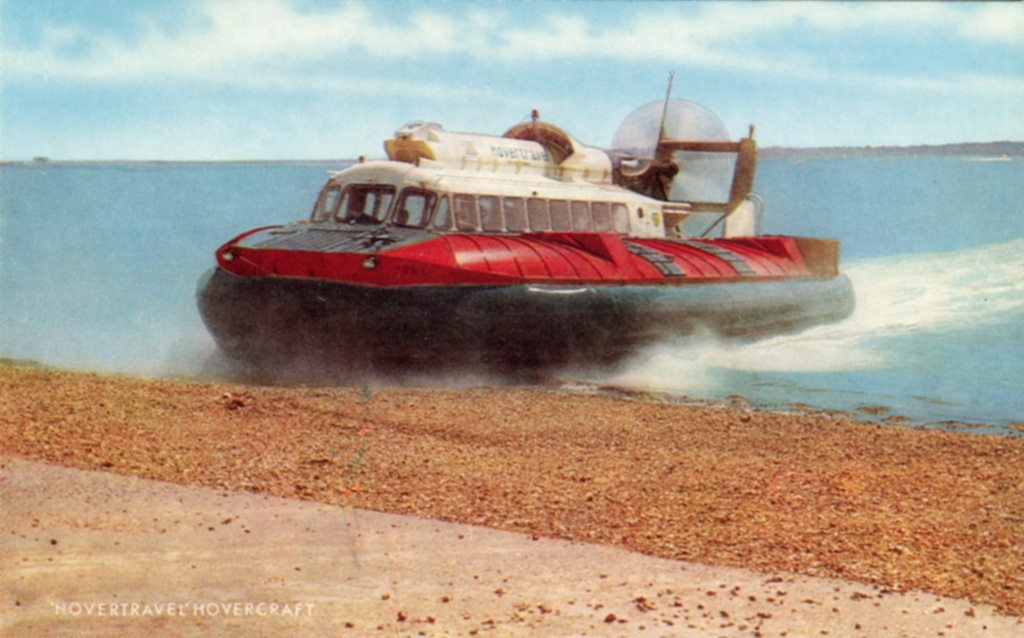
The SRN6 Hovertravel 4 Hovercraft arriving at Stokes Bay 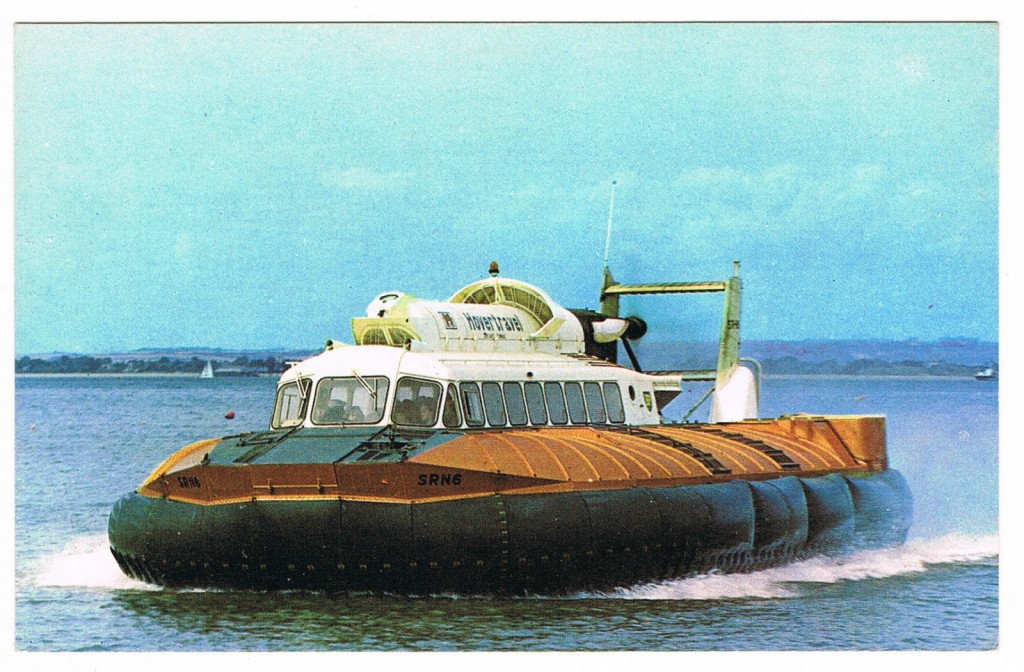
Ryde to Gosport Hovercraft arrives on the beach at Stokes bay
Browndown Hovershows
In June 1966 the world’s first Hovershow opened at Browndown. Running for five days, it was opened by Viscount Lord Louis Mountbatten who arrived in a helicopter landing on the grassed area behind Stokes Bay Sailing Club. It attracted up to 4,000 visitors by closing time on the Sunday and was intended to promote export sales of hovercraft. The government order was for two new prototypes, a fast patrol boat capable of 75 knots and a logistics support craft.
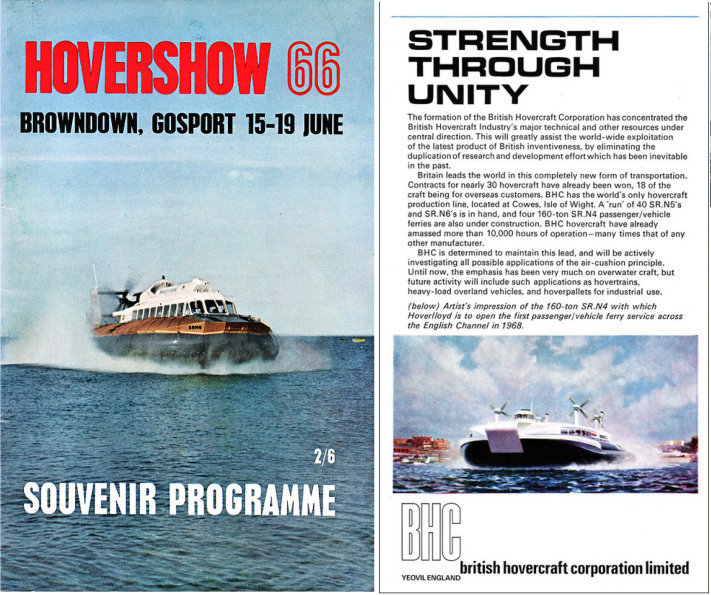
Hovershow 66 Brochure 
SRN 3 at Browndown Hovershow66 (Photo Pat Lawrence) 
Hovershow June 1966 poster 
SRN3 Hovercraft of the IHTU at Browndown during Hovershow66.
Inter Service Hovercraft Trials Unit
In the same year that Hovershow66 took place, a new Hovercraft Trials Unit was established at Browndown called the 200 Hovercraft Trials Squadron. Two years later it was named 200 Hovercraft Squadron Royal Corps of Transport. Hovercraft were tested over the area of the adjacent shingle beach and across to the Isle of Wight. An observation post was constructed on top of the old Victorian Browndown Battery, still in place today

200 Squadron Hovercraft stuck on the beach at Browndown (Photo James Hutchinson Flickr) 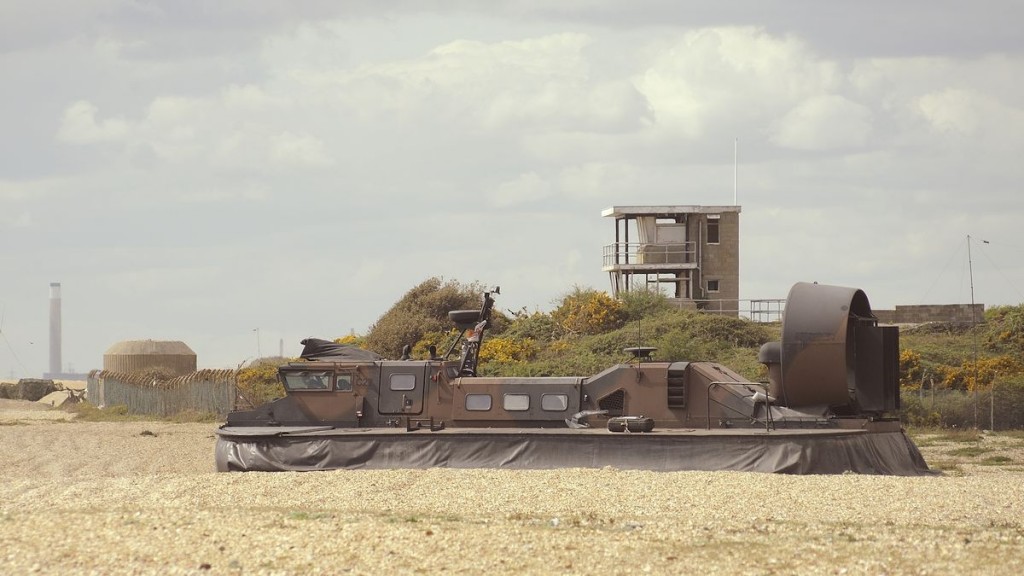
RCT Hovercraft. Lookout on Browndown battery behind. (Photo Ken Irvine Flikr) 
SRN3 Hovercraft of the IHTU at Browndown during Hovershow66. 
200 Hovercraft Sqn RCT. Browndown Camp. 
Browndown Battery viewed from the rear. The lookout on top was added during the period when Browndown was used for Hovercraft trials 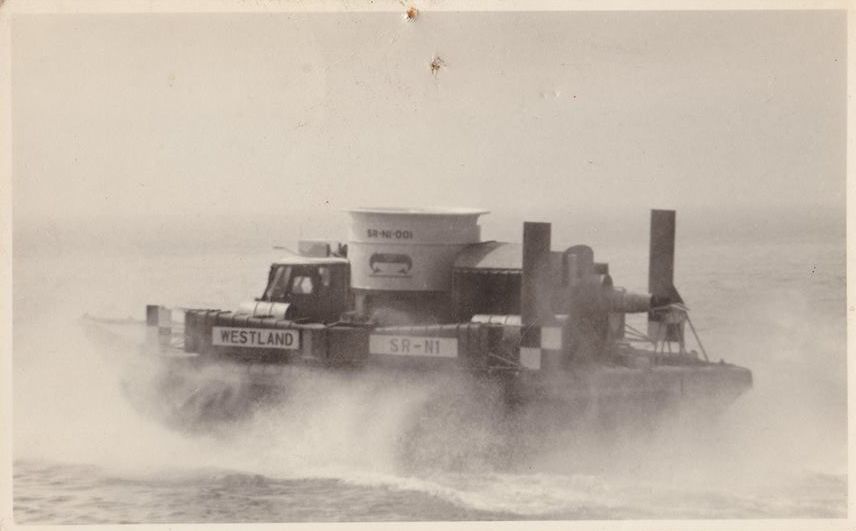
The first hovercraft an SRN1.
Hovercraft Museum
The Hovercraft Museum based in Lee-on-the-Solent is home to the world’s only collection of historic hovercraft. Based on the former HMS Daedalus site at Lee-on-the-Solent, the Museum currently has 75 hovercraft plus an archive and library on site.
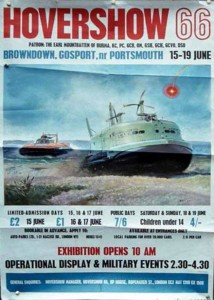 |
|
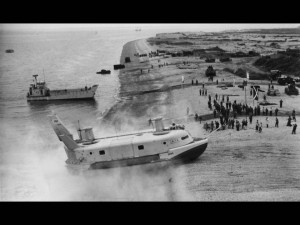 |
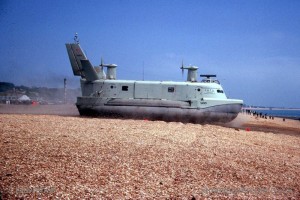
Hovershow 66 Brochure
